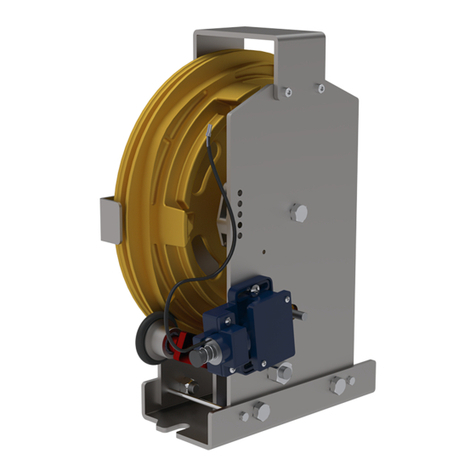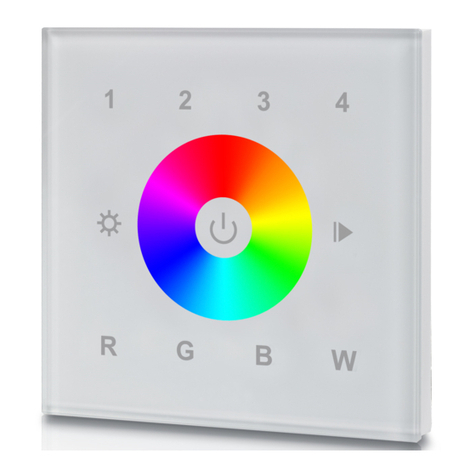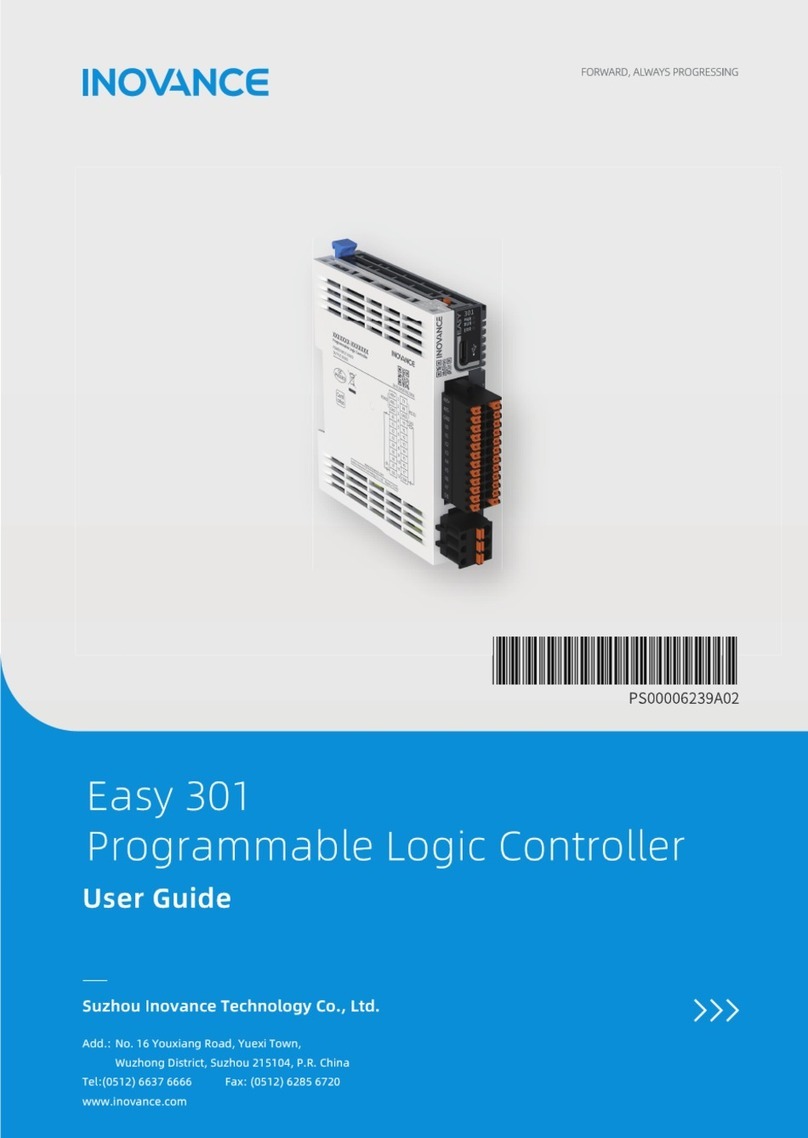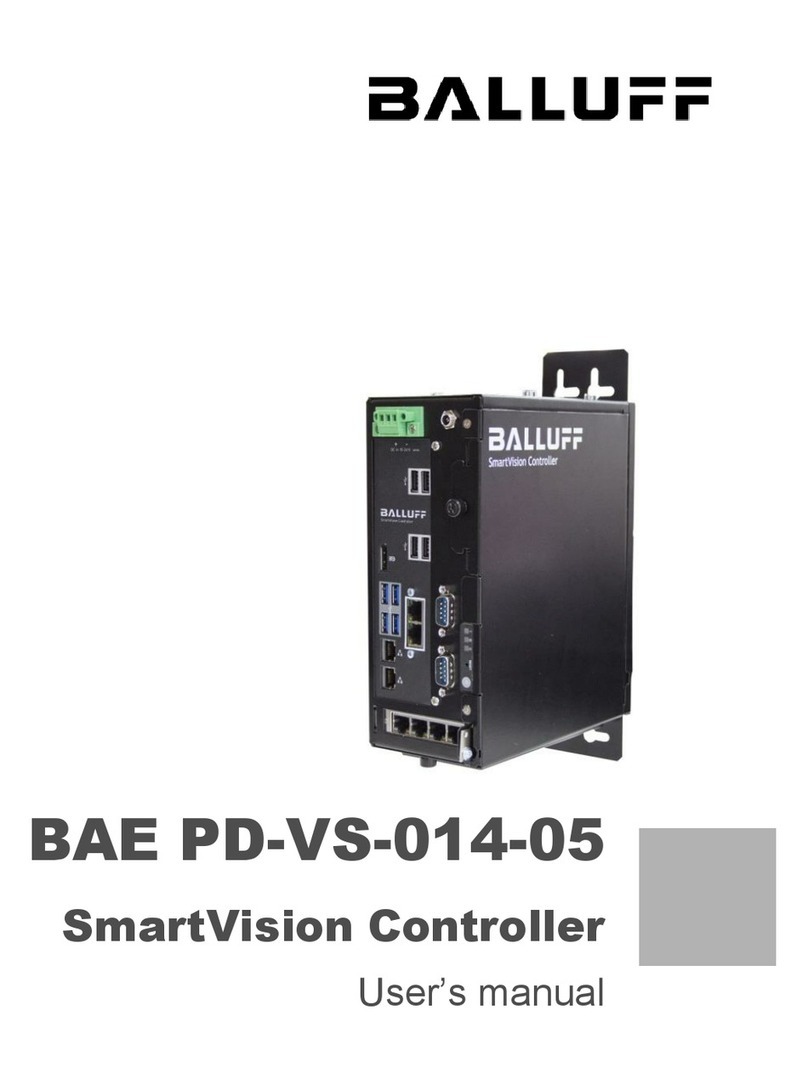United Technologies Carrier OPN-VAVB1 Installation manual

V
VA
AV
V
Z
Zo
on
ne
e
C
Co
on
nt
tr
ro
ol
ll
le
er
rs
s
I
In
ns
st
ta
al
ll
la
at
ti
io
on
n
a
an
nd
d
S
St
ta
ar
rt
t-
-u
up
p
G
Gu
ui
id
de
e
CARRIER CORPORATION ©2013
A member of the United Technologies Corporation family · Stock symbol UTX · Catalog No. 11-808-432-01 · 9/10/2013


Table of Contents
Introduction.................................................................................................................................................................. 1
What are VAV Zone Controllers? ........................................................................................................................1
Linkage...................................................................................................................................................................4
Specifications ........................................................................................................................................................5
Safety Considerations ..........................................................................................................................................8
Installation ................................................................................................................................................................... 9
Field-supplied hardware ......................................................................................................................................9
Mounting the VAV Zone Controller.................................................................................................................. 10
To mount the controller ......................................................................................................................10
Wiring the VAV Zone Controller for power ..................................................................................................... 12
To wire the controller for power..........................................................................................................12
To address the VAV Zone Controller ............................................................................................................... 13
Wiring the VAV Zone Controller to the MS/TP network ............................................................................... 14
Wiring specifications ...........................................................................................................................14
To wire the controller to the network .................................................................................................14
Wiring sensors to inputs ................................................................................................................................... 15
Wiring an SPT sensor ..........................................................................................................................16
Rnet wiring specifications........................................................................................................16
To wire the SPT sensor to the controller .................................................................................17
Wiring a T55 space temperature sensor ...........................................................................................18
Wiring specifications ................................................................................................................18
To wire the T55 sensor to the controller.................................................................................18
Wiring a Supply Air Temperature sensor............................................................................................18
Wiring specifications ................................................................................................................19
To wire the SAT sensor to the controller .................................................................................19
Wiring a CO2 sensor............................................................................................................................19
Wiring specifications ................................................................................................................20
To wire the CO2 sensor to the controller ................................................................................20
Wiring a Relative Humidity sensor .....................................................................................................21
Wiring specifications ................................................................................................................21
To wire the RH sensor to the controller...................................................................................22
Wiring a remote occupancy sensor ....................................................................................................22
Wiring specifications ................................................................................................................23
Wiring equipment to outputs........................................................................................................................... 23
Wiring specifications ...........................................................................................................................24
Balancing the system using the i-Vu/Field Assistant applications...................................................24
Step 1: Prepare for balancing.................................................................................................24
Step 2: Balance each zone .....................................................................................................25
Balancing the system using Test & Balance tool ..............................................................................25
To calibrate VAV Zone airflow ..................................................................................................26
Step 3: Upload calibration values to the i-Vu/Field Assistant application ...........................27
Step 4: Run a report in VAV Zone Controller (Optional) ........................................................27
Wiring diagram legend ........................................................................................................................28
No heat - Single duct or fan box application......................................................................................28
2-position hot water/steam heat - Single duct..................................................................................29
Modulating hot water/steam (ducted or baseboard) - Single duct application...............................29
Combination heat (ducted electric heat with modulating baseboard heat) - Single duct application
..............................................................................................................................................................30
Electric heat (ducted or baseboard) - Single duct application..........................................................30
SCR electric heat (ducted or baseboard) - Single duct application..................................................31
2-position hot water/steam (ducted or baseboard) - Fan box application ......................................31
Modulating hot water (ducted or baseboard) - Fan box application ................................................32
© 2013 Carrier Corporation. All rights reserved throughout the world. I-Vu is a registered trademark of Carrier
Corporation. BACnet is a registered trademark of ASHRAE. All other trademarks are the property of their
respective owners.

Table of Contents
Combination heat (ducted electric heat with modulating baseboard heat) - Fan box application.32
2-stage electric heat (ducted or baseboard) - Fan box application..................................................33
SCR electric heat (ducted or baseboard) - Single duct application..................................................33
Wiring a field-supplied high-torque actuator to the analog output...................................................34
Start-up.......................................................................................................................................................................35
Configuring the VAV Zone Controller's properties ........................................................................................ 35
Performing system checkout........................................................................................................................... 35
Commissioning the VAV Zone Controller ....................................................................................................... 36
Balancing the system........................................................................................................................................ 37
Prepare for balancing..........................................................................................................................37
Sequence of operation..............................................................................................................................................38
Temperature sensors ........................................................................................................................................ 38
Zone airflow control........................................................................................................................................... 38
Zone reheat control ........................................................................................................................................... 39
Demand control ventilation (DCV) and dehumidification using optional sensors................................... 40
Occupancy........................................................................................................................................................... 41
Alarms ................................................................................................................................................................. 42
Demand limiting ................................................................................................................................................ 43
Linkage................................................................................................................................................................ 43
Air source mode determination....................................................................................................................... 46
Troubleshooting .........................................................................................................................................................48
LED's .................................................................................................................................................................... 48
Serial number..................................................................................................................................................... 49
To replace the VAV Zone Controller's battery................................................................................................ 49
Compliance ................................................................................................................................................................50
FCC Compliance................................................................................................................................................. 50
CE Compliance ................................................................................................................................................... 50
BACnet Compliance........................................................................................................................................... 50
Appendix A: VAV Zone Controller Points/Properties .............................................................................................51
Status................................................................................................................................................................... 51
Unit Configuration.............................................................................................................................................. 52
Setpoints ............................................................................................................................................................. 54
Alarm Configuration .......................................................................................................................................... 60
Service Configuration........................................................................................................................................ 61
Maintenance....................................................................................................................................................... 65
Alarms ................................................................................................................................................................. 67
Linkage................................................................................................................................................................ 68
I/O Points............................................................................................................................................................ 70
Appendix B: VVT terminal modes .............................................................................................................................72
Index ...........................................................................................................................................................................74

What are VAV Zone Controllers?
An i-Vu® Open Control System offers 2 VAV Zone Controllers, the VAV Zone Single Duct controller (#OPN-VAVB1)
and the VAV Zone Fan Terminal controller (#OPN-VAVB3), to control zone temperature using single duct or fan
powered terminals in a Variable Air Volume (VAV®) application. Although a VAV Zone Controller can be included in
a VVT system, this manual focuses mainly on its usage in VAV applications.
The VAV Zone Controller has a built-in actuator and maintains zone temperature by operating the terminal fan and
regulating the flow of conditioned air into the space. Buildings with diverse loading conditions can be supported by
controlling the local terminal's supplemental heat. The VAV Zone Controller provides dedicated control functions
for single duct, parallel fan box terminals and series fan box terminals with modulating heat, up to 2 stages of
ducted heat, or combination baseboard and ducted heat.
The following illustration shows the VAV Zone Controller in a typical i-Vu Open Control System.
VVT Zone
(OPN-VVTZC)
VVT Zone
(OPN-VVTZC)
VVT Zone
(OPN-VVTZC)
VVT Zone
(OPN-VVTZC)
MAN UAL O N WARM ER
Occupied
INFO COOLER
F
MAN UAL O N WARM ER
Occupied
INFO COOL ER
F
MAN UAL O N WARM ER
Occupied
INFO COOL ER
F
MAN UAL O N WARM ER
Occupied
INFO COOLER
F
UC Open
Introduction
VAV Zone Controllers 1

Introduction
VAV Zone Single Duct controller (#OPN-VAVB1)
0134
5
2
78
9 6
0134
5
2
78
9 6
HWV/ACT
Gnd
Analog
Output
Gnd
T55 (Opt)
RH/CO2
Gnd
SAT
Gnd
REMOTE
n/a
Gnd
Rnet +
Rnet -
+12V
R n e t BACnet Power
On
4
3
2
1
-
+
Batt
CR2032 10's
1's
Thermistor
T55 (Opt)
RH/CO2
FactoryDefaults
Rnet
MSTP
Class 2
Output
24V Max,
1AMax Conductors Only
Class 2
Use Copper
26Vdc, 0.1A, 3W
14VA, 0.58A
24Vac, 50-60 Hz
This product was designed
CAUTION:
to be mounted inside the
building envelope.Warranty
voided if mounted outside.
Interconnect the Outputs of
Different Class 2 Circuits.
To ReduceThe Risk of Fire
or Electric Shock, Do Not
CAUTION:
BACnet
®
AO: 0-10 Vdc
5mAMax
Local
Access
Short pins
Enable SAT
Enable SAT and REMOTE
CW CCW
Motor
Error
Run
Power
0-5Vdc
Made in USA
Inputs
Tx
Rx
MSTPBaud
76.8k38.4k19.2k
9600
Damper release buttoninside
TYPE: 002101
E143900
88FO
Enclosed Energy
Management Equipment
R
Net +
Net -
Shield
Ground
24V ac
Rnet+
Sense
+12V
Rnet-
Gnd
Power for B.O.s
BUS
HEAT1
BT485
VAV Zone
Single Duct
(OPN-VAVB1)
High
Low
Flow
(with filter)
2 VAV Zone Controllers

Introduction
VAV Zone Fan Terminal controller (#OPN-VAVB3)
0134
5
2
78
9 6
0134
5
2
78
9 6
HWV/ACT
Gnd
Analog
Output
Gnd
T55 (Opt)
RH/CO2
Gnd
SAT
Gnd
REMOTE
n/a
Gnd
Rnet +
Rnet -
+12V
R n e t BACnet Power
On
4
3
2
1
-
+
Batt
CR2032 10's
1's
Thermistor
T55 (Opt)
RH/CO2
FactoryDefaults
Rnet
MSTP
Outputs
Class 2
24V Max,
1AMax Conductors Only
Class 2
Use Copper
26Vdc, 0.1A, 3W
14VA, 0.58A
24Vac, 50-60 Hz
This product was designed
CAUTION:
to be mounted inside the
building envelope.Warranty
voided if mounted outside.
Interconnect the Outputs of
Different Class 2 Circuits.
To ReduceThe Risk of Fire
or Electric Shock, Do Not
CAUTION:
BACnet
®
AO: 0-10 Vdc
5mAMax
Local
Access
Short pins
Enable SAT
Enable SAT and REMOTE
CW CCW
Motor
Error
Run
Power
0-5Vdc
Made in USA
Inputs
Tx
Rx
MSTPBaud
76.8k38.4k19.2k
9600
Damper release buttoninside
TYPE: 002101
E143900
88FO
Enclosed Energy
Management Equipment
R
Net +
Net -
Shield
Ground
24V ac
Rnet+
Sense
+12V
Rnet-
Gnd
FAN/
Power for B.O.s
BUS
HEAT1
HEAT2
HEAT3
BT485
VAV Zone
Fan Terminal
(OPN-VAVB3)
High
Low
Flow
(with filter)
NOTE
This document gives instructions for field-installation of a VAV Zone Controller in an i-Vu Open Control
System. However, VAV Zone Controllers are available factory-mounted to Carrier’s 35 single duct and 45 parallel
and series fan terminals. All terminals require an integrated duct temperature sensor.
VAV Zone Controllers 3

Introduction
Linkage
The i-Vu Open Control System uses linkage to exchange data between the zone terminals and their air source to
form a coordinated HVAC system. The system's air source controller and zone controllers are linked so that their
data exchange can be managed by one zone controller configured as the VAV Master.
A VAV Master can have a maximum of 63 slave zone controllers reporting to it. An MS/TP network is limited to a
maximum of 60 controllers, but a VAV Master can have controllers from other networks as slaves.
A linked VAV system can be as simple as a single MS/TP network with a VAV Master and slaves, or it can be as
complex as multiple MS/TP networks with VAV sub-masters and slaves on other networks. See the following
examples.
EXAMPLE #1
:A simple network. The VAV Master exchanges data between the slave controllers and the AHU
controller. The linked controllers on an MS/TP network must be sequentially addressed, and the VAV Master must
have the highest address.
Address
12345678
VAV
Master
Slaves
Network #:
16116
AHU
EXAMPLE #2
: The above network plus slave controllers on other networks.
Address
12345
3
11
678
VAV
Master
Slaves
Network #:
16116 Network #:
16119
Network #:
16130
AHU
EXAMPLE #3
: The above network plus sub-masters and their slaves. (For VAV systems only. VVT systems do not
support sub-masters.) The sub-masters exchange data between their slaves and the VAV Master, and the VAV
Master handles data exchange for the whole system.
4 VAV Zone Controllers

Introduction
Address
12345
23
19
678
VAV
Master
45678910 11
Sub-
Master
123456
Sub-
Master
Slaves
Network #:
16116
Network #:
16115 Network #:
16113
Network #:
16117
Network #:
16130
AHU
You set up linkage for the system by defining the Linkage properties for each controller. See Linkage Properties
(page 68).
Specifications
Driver
Part number
Driver
OPN-VAVB1 drv_vav1open
OPN-VAVB3 drv_vav3open
Maximum number of control
programs
1
Power 24 Vac ±10%, 50–60 Hz
14 VA power consumption (20 VA with BACview® device attached)
26 Vdc (25 V min, 30 V max)
Single Class 2 source only, 100 VA or less
BACnet port
For communication with the controller network using MS/TP (9600 bps, 19.2
kbps, 38.4 kbps, or 76.8 kbps)
Rnet port For SPT sensors and a BACview6device in any of the following combinations,
wired in a daisy-chain configuration:
•1 SPT Plus or SPT Pro
•1–4 SPT Standards
•1–4 SPT Standards, and 1 SPT Plus or SPT Pro
•Any of the above combinations, plus a BACview6 device, but no more than
6 devices total
Local Access port For system start-up and troubleshooting
VAV Zone Controllers 5

Introduction
Inputs 4 inputs for connecting the following types of sensors:
•An alternate space temperature sensor (#33ZCT55SPT)
•Supply air temperature sensor (#33ZCSENSAT)
•Duct air temperature sensor (#33ZCSENDAT)
•CO2 sensor (#33ZCSENCO2)
•Relative humidity sensor (#33ZCSENSRH-02 [indoor space] or
33ZCSENDRH-02 [duct])
•
Remote occupancy sensor
Input resolution 10 bit A/D
Digital outputs #OPN-VAVB1: 1 digital output
#OPN-VAVB3: 3 digital outputs
Relay contact rated at 1 A max. @ 24 Vac/Vdc. Configured normally open.
Analog output 1 analog output, 0–10 Vdc (5 mA max). The controlled device must have a
minimum of 2000 Ohms resistance measured from its input to ground and
must share the same ground as the controller.
Output resolution 8 bit A/D, using filtered PWM
Integral actuator Brushless DC motor, torque 35 inch-pounds (4 Nm), runtime 205 seconds for
90 degree travel during control, or 25 seconds in high-speed test and balance
mode
Battery 10-year Lithium CR2032 battery retains the following data for a maximum of
10,000 hours during power outages: control programs, editable properties,
schedules, and trends.
Protection Incoming power and network connections are protected by non-replaceable
internal solid-state polyswitches that reset themselves when the condition that
causes a fault returns to normal.
The power, network, input, and output connections are also protected against
transient excess voltage/surge events lasting no more than 10 msec.
BT485 connector You attach a BT485 (not included) to a controller at the beginning and end of
a network segment to add bias and to terminate a network segment.
Status indicators LED's indicate status of communications, running, errors, power, and digital
outputs
Environmental operating
range
0 to 130°F (-18 to 54°C), 0 to 90% relative humidity, non-condensing
Storage temperature range -24 to 140°F (-30 to 60°C), 0 to 90% relative humidity, non-condensing
Physical UL94-5VA plenum rated enclosure for installation in plenum (or other space
for environmental air) in accordance with NEC Section 300.22 (c) and (d)
6 VAV Zone Controllers

Introduction
Overall dimensions A:
B:
C:
7 in. (17.8 cm)
6-1/32 (15.4 cm)
6 in. (15.24 cm)
Mounting dimensions D:
E:
F:
G:
H:
5-5/8 in. (14.3 cm)
4-9/16 in. (24.3 cm)
1-5/16 in. (3.3 cm.)
7/8 in. (2.2 cm)
1-5/16 in. (3.3 cm)
Panel depth 2-1/2 in. (6.4 cm) minimum
Shaft dimensions Minimum shaft diameter: 3/8 in. (.95 cm.)
Maximum shaft diameter: 1/2 in. (1.27 cm)
Minimum shaft length: 1 3/4 in. (4.45 cm)
Weight 1.7 lbs (0.77 kg)
BACnet support Conforms to the BACnet Advanced Application Controller (B-AAC) Standard
Device Profile as defined in ANSI/ASHRAE Standard 135-2012 (BACnet)
Annex L, Protocol Revision 9
Listed by UL-916 (PAZX), cUL-916 (PAZX7), FCC Part 15-Subpart B-Class A, CE
EN50082-1997, UL94-5VA plenum rated enclosure
VAV Zone Controllers 7

Introduction
Safety Considerations
SAFETY NOTE
Air conditioning equipment will provide safe and reliable service when operated within design specifications.
The equipment should be operated and serviced only by authorized personnel who have a thorough knowledge
of system operation, safety devices, and emergency procedures.
Good judgment should be used in applying any manufacturer's instructions to avoid injury to personnel or
damage to equipment and property.
ELECTRICAL SHOCK HAZARD
Failure to follow this warning could cause personal injury, death, and/or equipment damage.
Disconnect all power to the unit before performing maintenance or service. Unit may automatically start if
power is not disconnected.
Follow all local, state, and federal laws regarding disposal of equipment containing hazardous materials such
as mercury contactors.
8 VAV Zone Controllers

Installation
To install the VAV Zone Controller:
1 Mount the controller to the VAV terminal. (page 10)
2 Wire the controller for power. (page 12)
3 Set the controller's address. (page 13)
4 Wire the controller to the MS/TP network. (page 14)
5 Wire sensor(s) to the controller. (page 15)
6 Wire equipment to the controller's outputs. (page 23)
Field-supplied hardware
Each zone controller installation requires the following field-supplied components:
•zone terminal unit
•round or rectangular mounting bracket
•space temperature sensor
•supply air temperature sensor
•2x4 in. standard single gang electrical box
•transformer— 24 Vac, 40 VA
•two no. 10 x 1/2-in. sheet metal screws (to secure SAT sensor to duct)
•two no. 6-32 x 5/8-in. screws (to mount space temperature sensor base to electrical box)
•wiring
•bushings (required when mounting SAT sensor in a duct 6-in. (15.2 cm) or less in diameter)
Optional:
•contactors (if required for fan or electric heat)
•indoor air quality sensor
•relative humidity sensor
•2 screws and 2 hollow wall anchors (to mount relative humidity sensor directly to wall)
•valve and actuator for hot water heat (if required)
Installation
VAV Zone Controllers 9

Installation
Mounting the VAV Zone Controller
Mount the VAV Zone Controller on the zone terminal’s damper actuator shaft. For service access, allow at least 1
foot (.3 m) of clearance between the front of the controller and adjacent surfaces.
End view inlet
Controller
Allow 1 ft. (.3 m) clearance
for service access
2.5 in.
(6.35
cm)
To mount the controller
1 Turn the damper shaft to fully close the damper.
2 Remove the controller’s cover.
3 Mount the controller to the VAV terminal by sliding the clamp assembly onto the damper shaft.
Damper Shaft
VAV Terminal
Controller
Anti-rotation slot
4 Secure the controller by installing the screw provided through the anti-rotation slot's bushing and o-ring.
O-ring Bushing
Anti-rotation slot
NOTE
Center the bushing in the slot. Failure to do so may cause the actuator to stick or bind.
5 Hold down the controller’s damper release button and rotate the actuator clamp in the same direction that
closed the damper. Rotate the clamp until it stops, then rotate it back one notch.
10 VAV Zone Controllers

Installation
Damper
release
button
5/8-in. nuts
6 Release the button.
7 Tighten the actuator clamp to the damper shaft by tightening the two 5/16 inch nuts.
8 Hold down the damper release button and rotate the damper from fully closed to fully open. If the damper
traveled less than 90 degrees, do the following to set the actuator's fully open position:
a) Loosen the appropriate stop clamp screw. See figure below.
b) Move the stop clamp until it contacts the
edge of the actuator cam.
c) Tighten the screw.
Move stop
clamp if
necessary
9 Hold down the damper release button, rotate the damper to verify that it fully opens and closes, then release
the button.
10 Connect the filter tubes to the controller's
High
and
Low
connectors.
High
Low
Tube installation
11 Connect at least 2 feet of 1/4-inch poly tubing to each filter tube.
12 Connect the other ends of the poly tubing to the airflow pickup located in the VAV terminal's
primary air inlet, Connect
High
to
High
and
Low
to
Low
.
VAV Zone Controllers 11

Installation
High
Low
Low
High
13 Replace the controller’s cover.
Wiring the VAV Zone Controller for power
The VAV Zone Controller is powered by a Class 2 power source. Take appropriate isolation measures when
mounting it in a control panel where non-Class 2 circuits are present.
Carrier controllers can share a power supply as long as you:
• Maintain the same polarity
• Use the power supply only for Carrier Open controllers
To wire the controller for power
1 Remove power from the power supply.
2 Pull the screw terminal connector from the controller's power terminals labeled
Gnd
and
24 Vac
or
Hot
.
3 Connect the transformer wires to the screw terminal connector.
4 Apply power to the power supply.
5 Measure the voltage at the VAV Zone Controller’s power input terminals to verify that the voltage is within the
operating range of 21.6–26.4 Vac.
6 Connect a 4-inch (10.2 cm) wire from
Gnd
to the control panel.
7 Insert the screw terminal connector into the VAV Zone Controller's power terminals.
12 VAV Zone Controllers

Installation
8 Verify that the
Power
LED is on and the
Run
LED is blinking.
To address the VAV Zone Controller
You must give the VAV Zone Controller an address that is unique on the network. You can address the VAV Zone
Controller before or after you wire it for power.
1 If the VAV Zone Controller has been wired for power, pull the screw terminal connector from the controller's
power terminals labeled
Gnd
and
24 Vac
. The controller reads the address each time you apply power to it.
2 Using the rotary switches, set the controller's address. Set the
Tens
(
10's
) switch to the tens digit of the
address, and set the
Ones
(
1's
) switch to the ones digit.
EXAMPLE
If the controller’s address is 25, point the arrow on the
Tens
(
10's
) switch to 2 and the arrow on
the
Ones
(
1's
) switch to 5.
10's
1's
1
3
4
5
2
7
8
9
6
0
1
3
4
5
2
7
8
9
6
0
CAUTION
The factory default setting is
00
and must be changed to successfully install your VAV Zone
Controller.
VAV Zone Controllers 13

Installation
Wiring the VAV Zone Controller to the MS/TP network
The VAV Zone Controller communicates using BACnet on an MS/TP network segment communications at 9600
bps, 19.2 kbps, 38.4 kbps, or 76.8 kbps.
Wire the controllers on an MS/TP network segment in a daisy-chain configuration.
Install a BT485 on the first and last controller on a network segment to add bias and prevent signal distortions
due to echoing.
See the MS/TP Networking and Wiring Installation Guide for more details.
Wiring specifications
Cable: 22 AWG or 24 AWG, low-capacitance, twisted, stranded, shielded copper wire
Maximum length: 2000 feet (610 meters)
To wire the controller to the network
1 Pull the screw terminal connector from the controller's power terminals labeled
Gnd
and
24 Vac
or
Hot
.
2 Check the communications wiring for shorts and grounds.
3 Connect the communications wiring to the BACnet port’s screw terminals labeled
Net +
,
Net -
, and
Shield
.
NOTE
Use the same polarity throughout the network segment.
4 Verify that the
MSTP
jumper is set to
MSTP
.
5 Set DIP switches 1 and 2 to the appropriate baud rate. See the MSTP baud diagram on the VAV Zone
Controller. The default baud rate is 76.8 kbps.
NOTE
Use the same baud rate for all controllers on the network segment.
14 VAV Zone Controllers

Installation
6 Insert the power screw terminal connector into the VAV Zone Controller's power terminals.
7 Verify communication with the network by viewing a module status report.
Wiring sensors to inputs
You can wire the following sensors to the VAV Zone Controller's inputs:
•Space temperature sensor
•Alternate space temperature sensor (page 18)
•Supply Air Temperature sensor (page 18)
•CO2sensor (page 19)
•Relative Humidity sensor (page 21)
•Remote occupancy contact sensor (page 22)
NOTE
This document gives instructions for wiring the sensors to the VAV Zone Controller. For mounting and wiring
the sensors, see the Carrier Sensors Installation Guide.
Disconnect electrical power to the VAV Zone Controller before wiring it. Failure to follow this warning could
cause electrical shock, personal injury, or damage to the controller.
•Do not run sensor or relay wires in the same conduit or raceway with Class 1 AC or DC service wiring.
•Do not abrade, cut, or nick the outer jacket of the cable.
•Do not pull or draw cable with a force that may harm the physical or electrical properties.
•Avoid splices in any control wiring.
VAV Zone Controllers 15

Installation
Wiring an SPT sensor
The VAV Zone Controller is connected to a wall-mounted space temperature sensor to monitor room temperature.
An i-Vu Open Control System offers the following SPT sensors:
Sensor
Part #
Features
SPT Standard
SPS
•Local access port
•No operator control
SPT Plus
SPPL
•Slide potentiometer to adjust setpoint
•MANUAL ON button to override schedule
•LED to show occupied status
•
Local access port
SPT Pro
SPP
•LCD display
•MANUAL ON button to override schedule
•WARMER and COOLER buttons to adjust setpoint
•INFO button to cycle through zone and outdoor air temperatures,
setpoints, and local override time
•
Local access port
SPT Pro Plus
SPPF
•LCD display
•MANUAL ON button to override schedule
•WARMER and COOLER buttons to adjust setpoint
•INFO button to cycle through zone and outdoor air temperatures,
setpoints, and local override time
•MODE button to cycle through custom programmed modes
•FAN button to select fan AUTO/ON
•
Local access port
You wire SPT sensors to a controller's
Rnet
port. An Rnet can consist of any of the following combinations of
devices wired in a daisy-chain or hybrid configuration:
•1 SPT Plus, SPT Pro, or SPT Pro Plus
•1–4 SPT Standards
•1–4 SPT Standards, and 1 SPT Plus, SPT Pro, or SPT Pro Plus
•Any of the above combinations, plus a BACview®6 device, but no more than 6 devices total
NOTE
If the Rnet has multiple SPT Standard sensors, you must give each a unique address on the Rnet. See the
Carrier Sensors Installation Guide.
Rnet wiring specifications
NOTE
Use the specified type of wire and cable for maximum signal integrity.
Description 4 conductor, unshielded, CMP, plenum rated cable
Conductor 18 AWG
Maximum length 500 feet (152 meters)
Recommended coloring Jacket: White
Wiring: Black, white, green, red
UL temperature rating 32–167°F (0–75°C)
16 VAV Zone Controllers
This manual suits for next models
1
Table of contents
Popular Controllers manuals by other brands
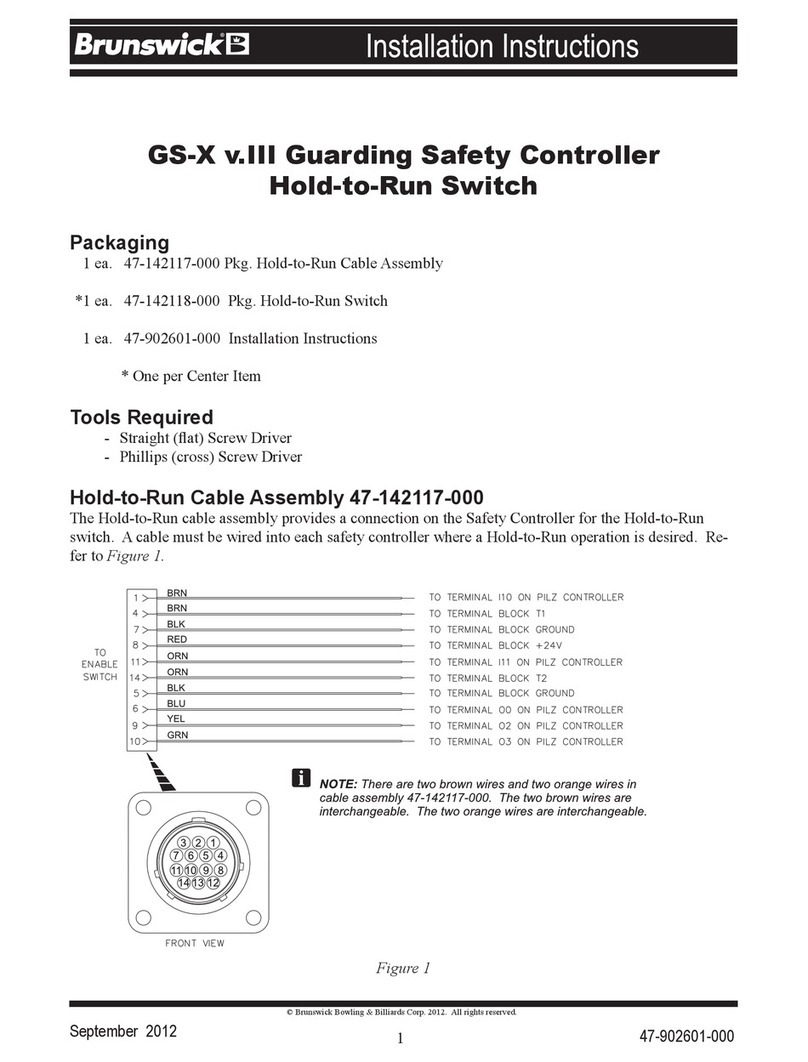
Brunswick
Brunswick GS Series installation instructions
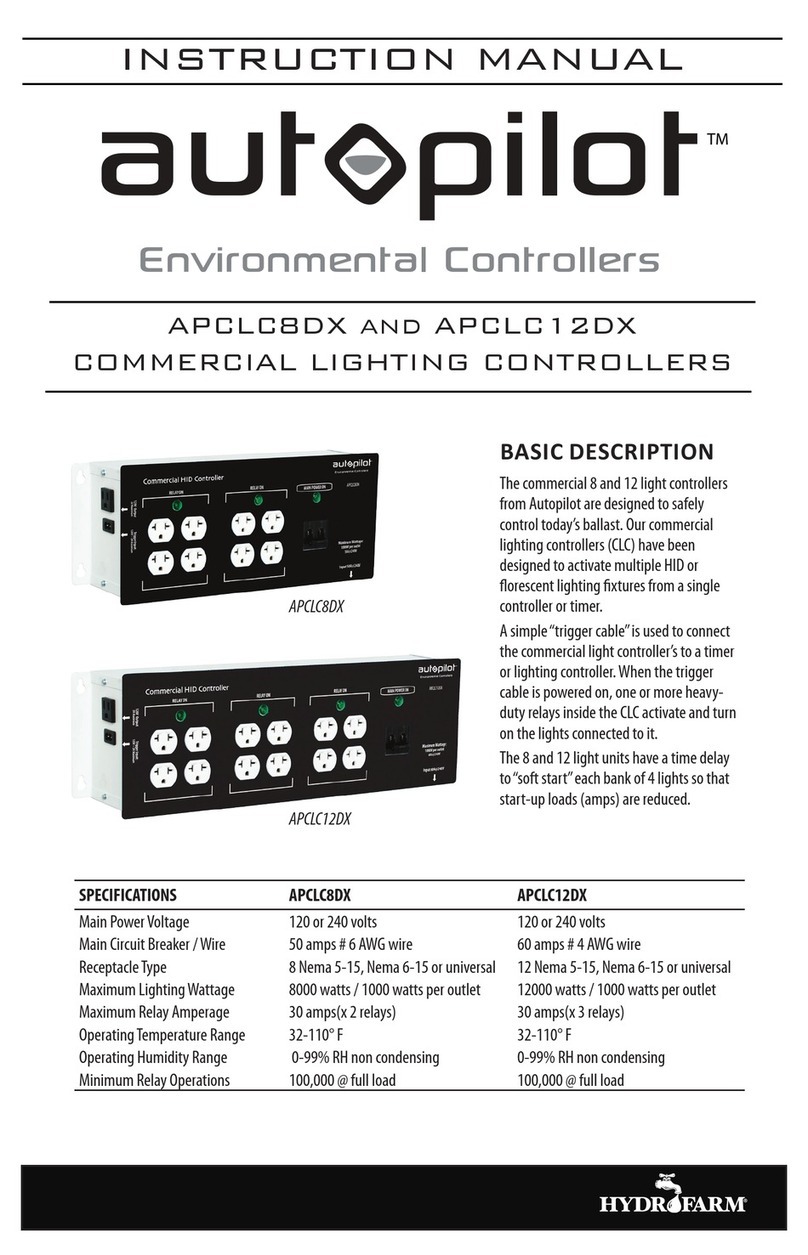
Autopilot
Autopilot APCLC8DX instruction manual

SJE
SJE VFDC-3000 user manual

Studio Technologies
Studio Technologies StudioComm 50 user guide
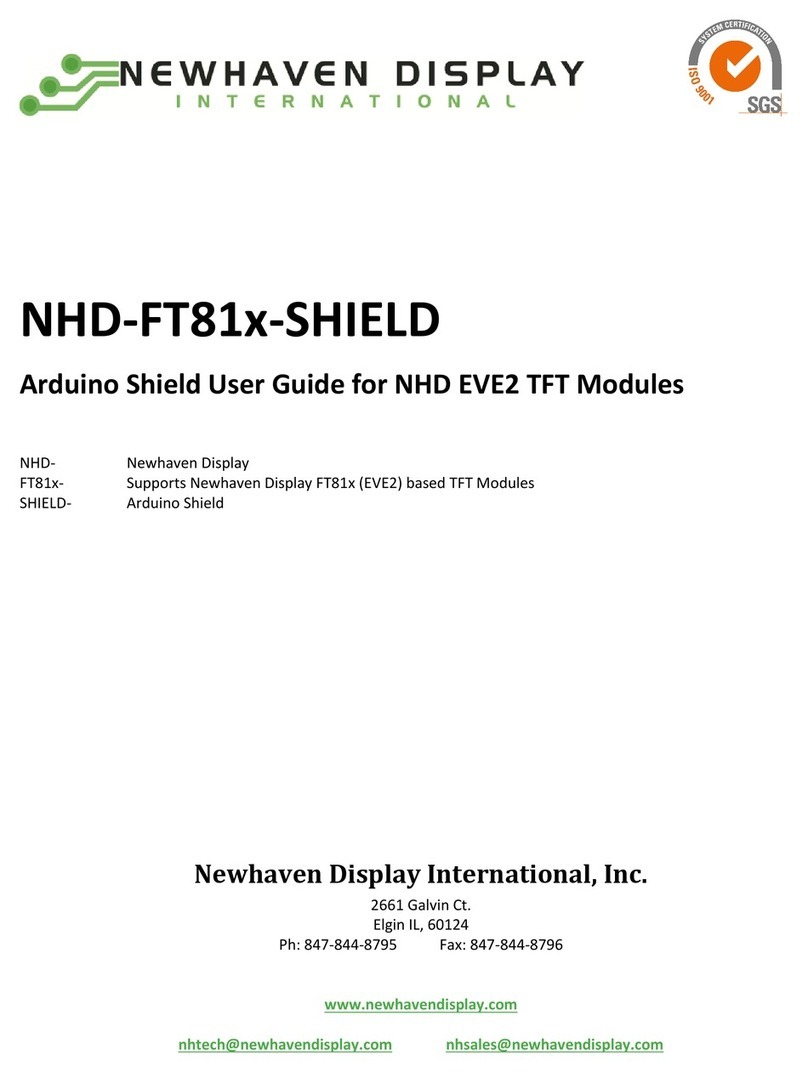
Newhaven Display International
Newhaven Display International NHD-FT81x-SHIELD user guide
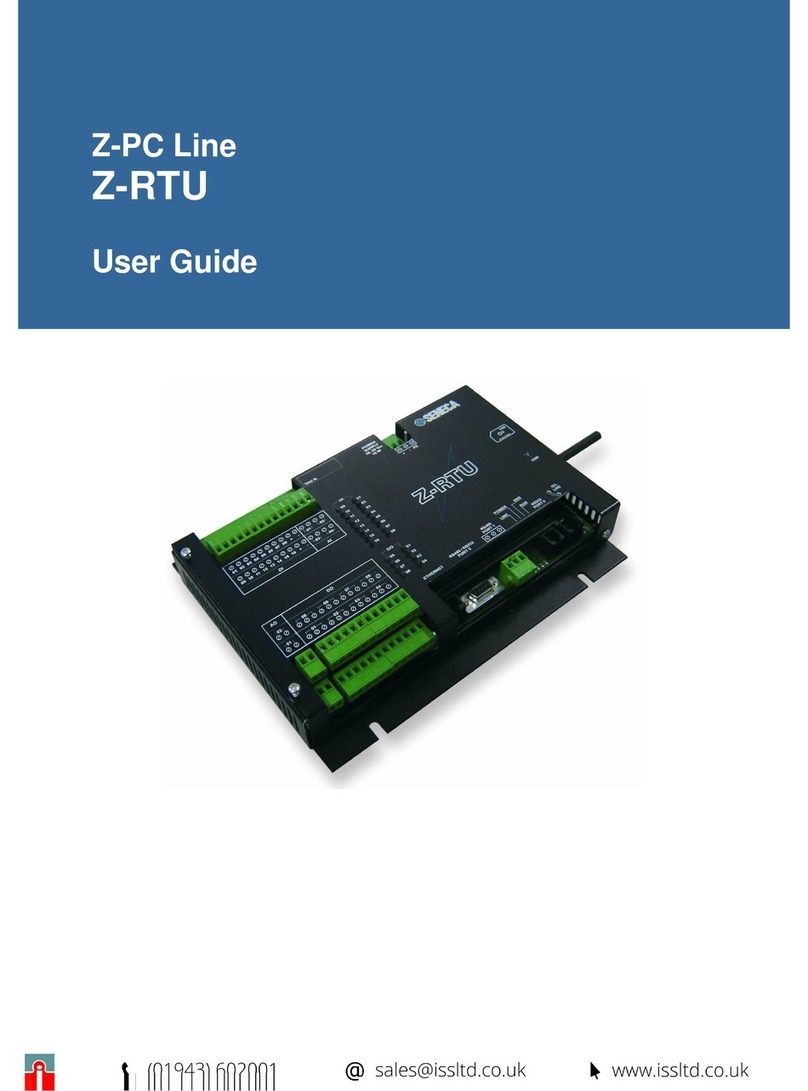
Seneca
Seneca Z-PC SERIES user guide
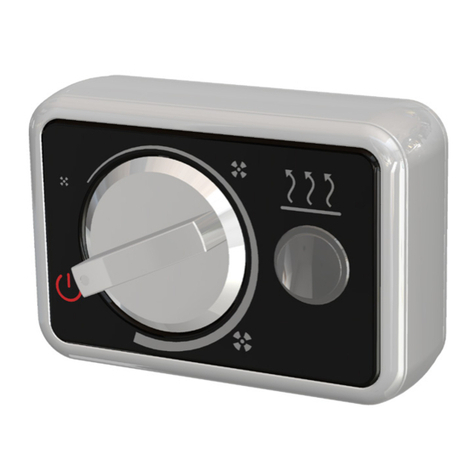
2VV
2VV AirGENIO Assembly, installation and operation instructions
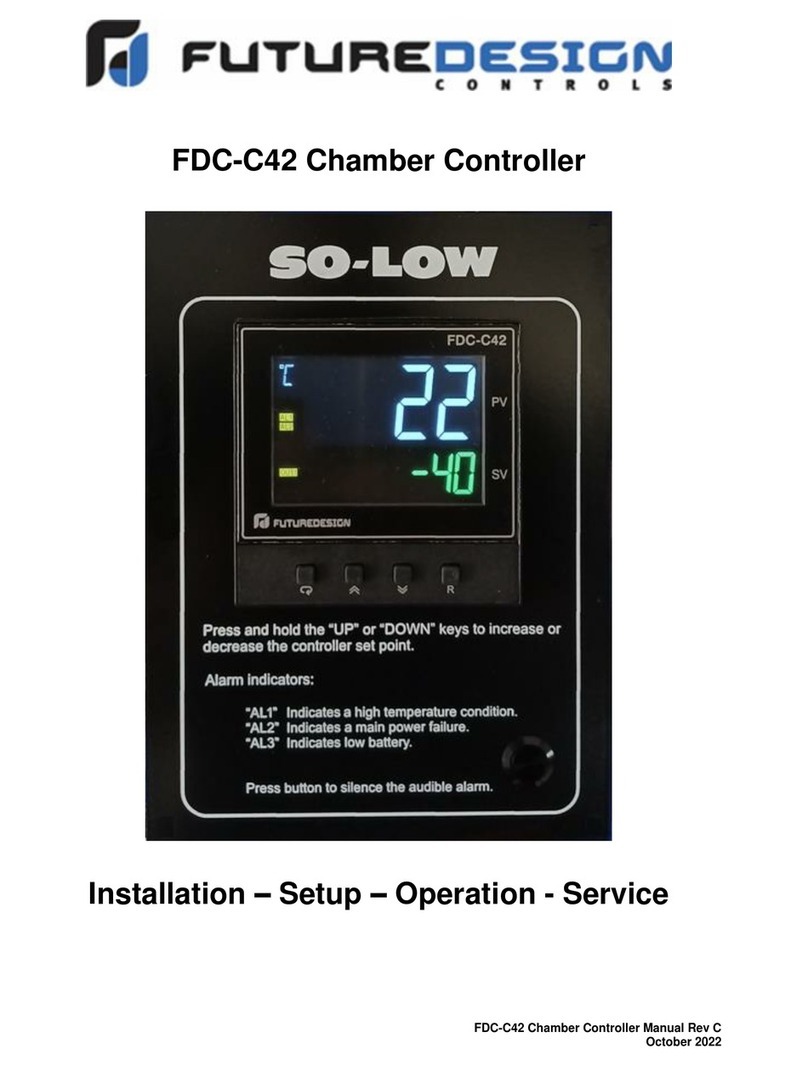
Future Design
Future Design FDC-C42 Installation setup manual
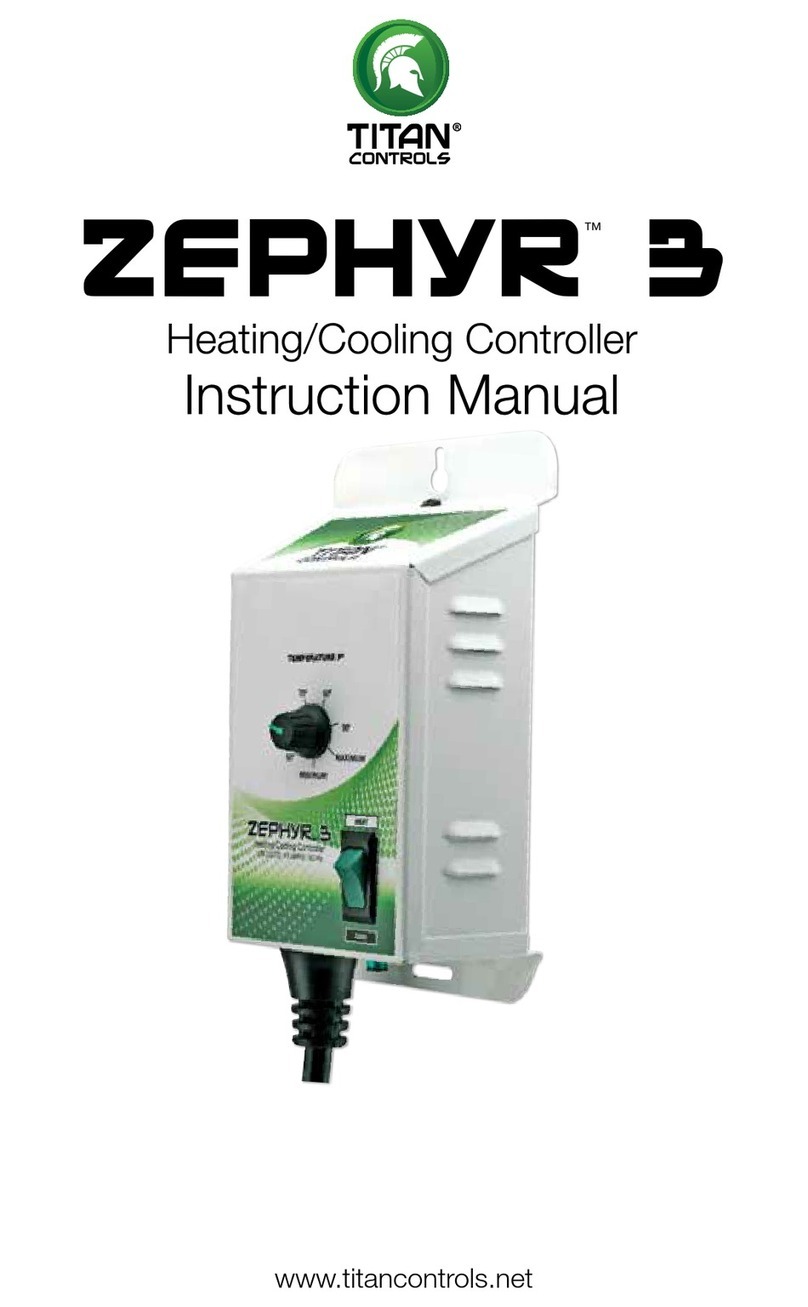
Titan Controls
Titan Controls ZEPHYR 3 instruction manual
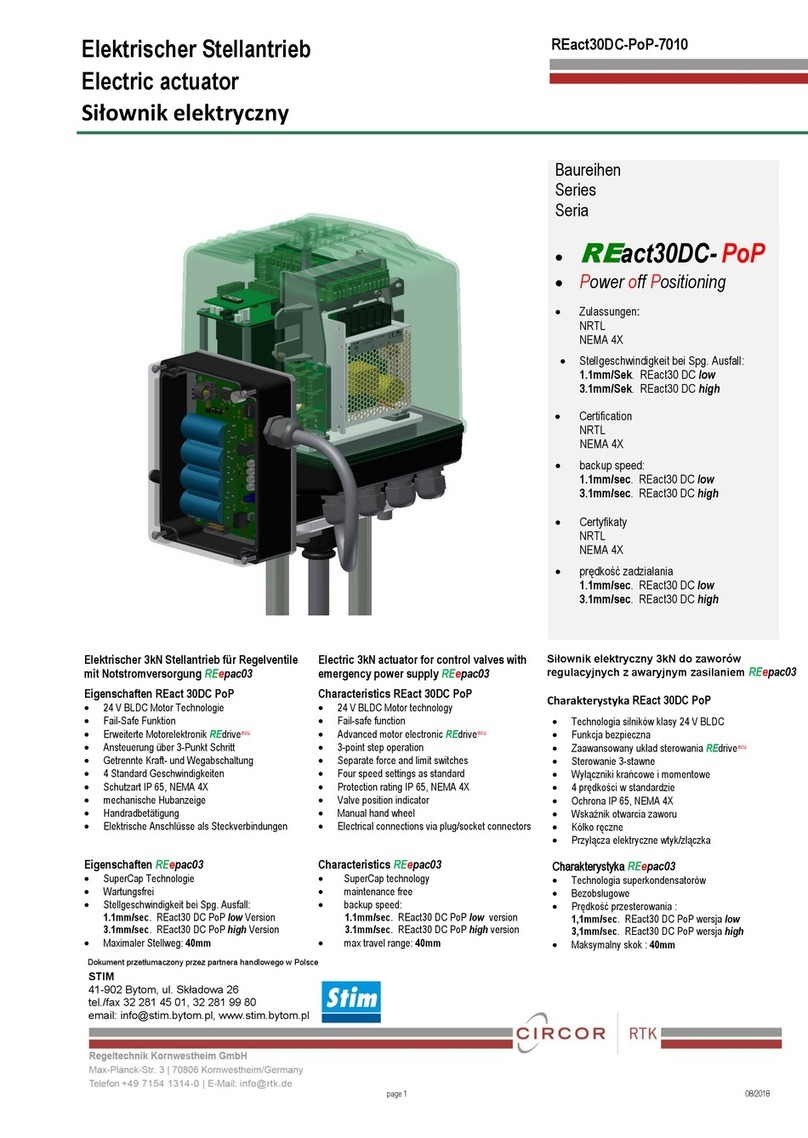
Circor
Circor REact30DC- PoP Series manual
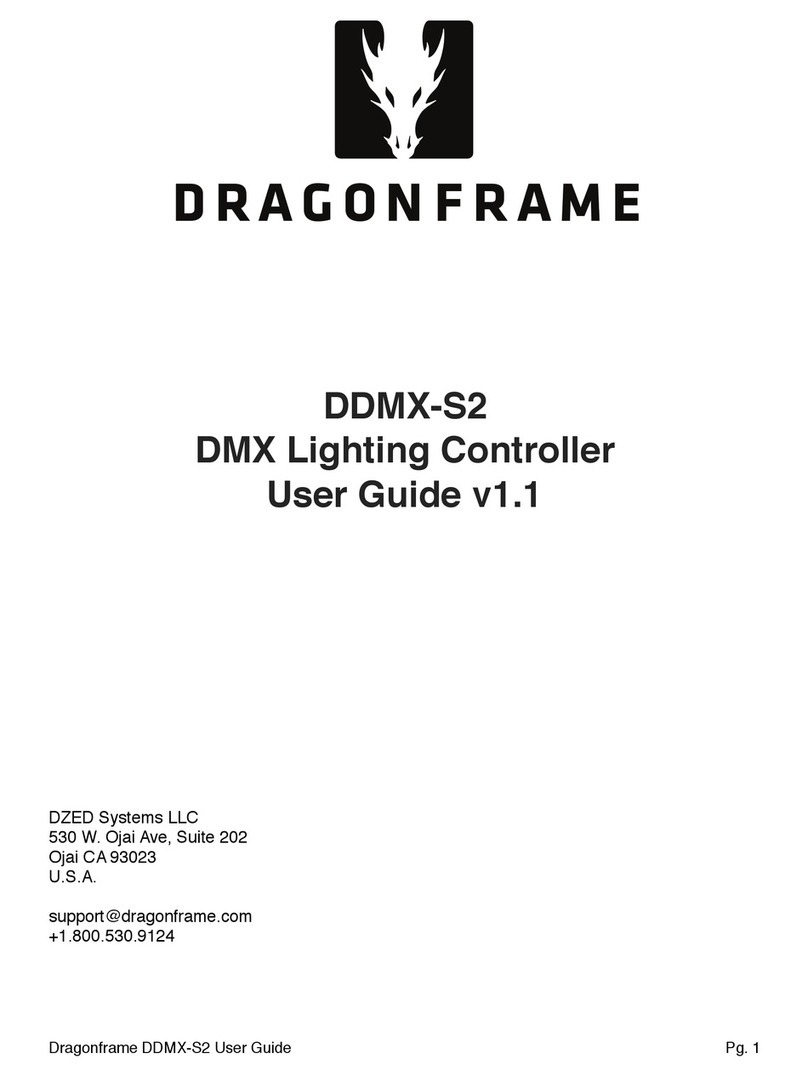
DRAGONFRAME
DRAGONFRAME DDMX-S2 user guide
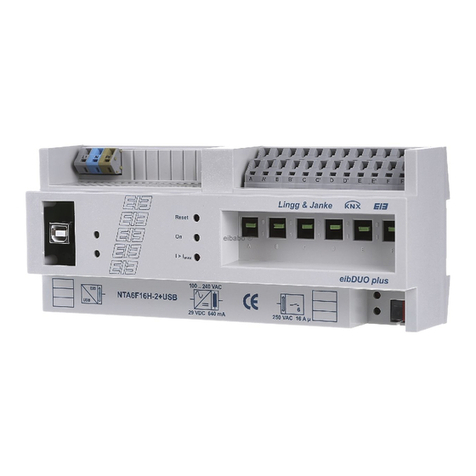
Lingg & Janke
Lingg & Janke KNX eibDUO NTA6F16H-2 user manual

